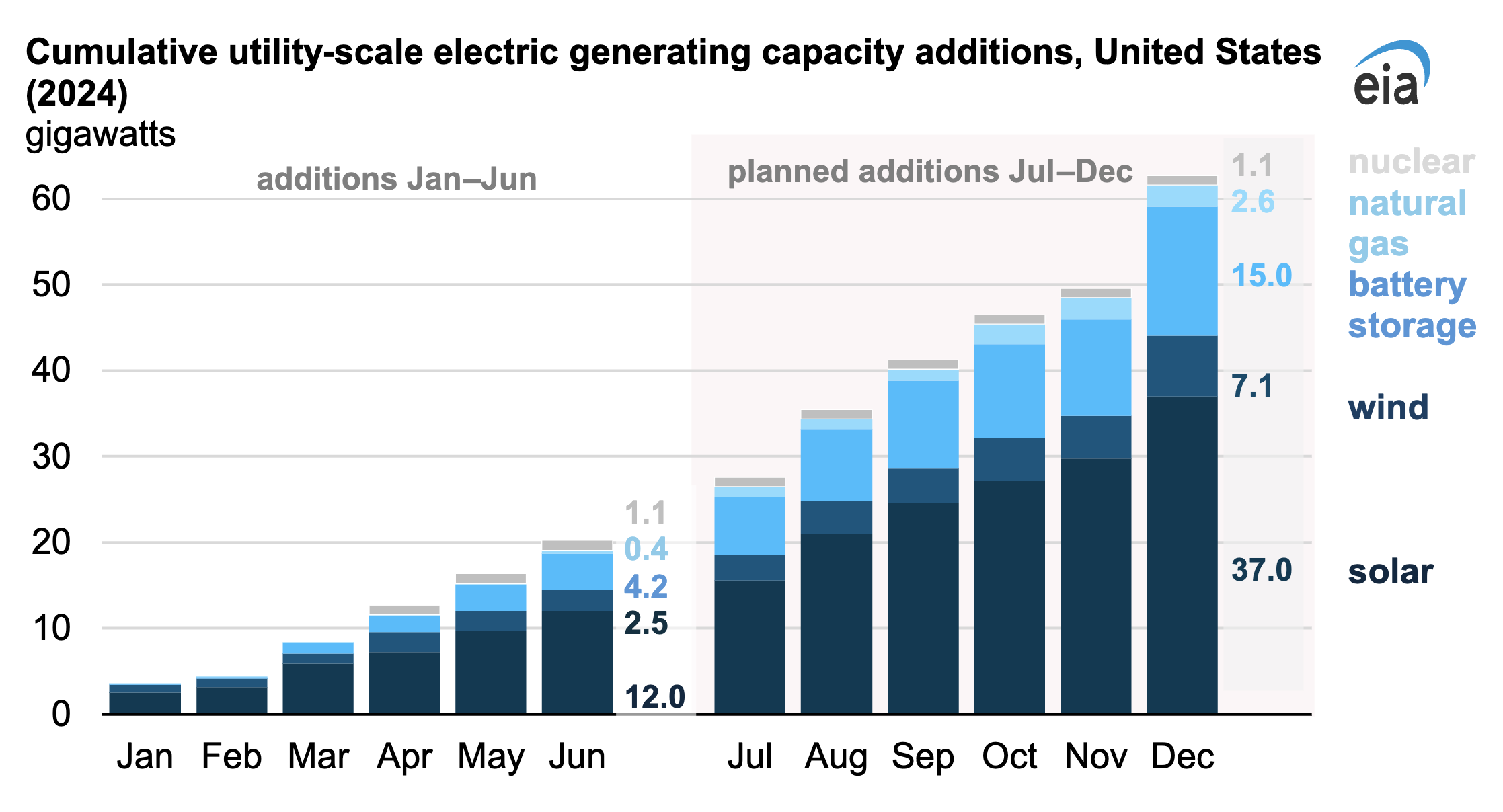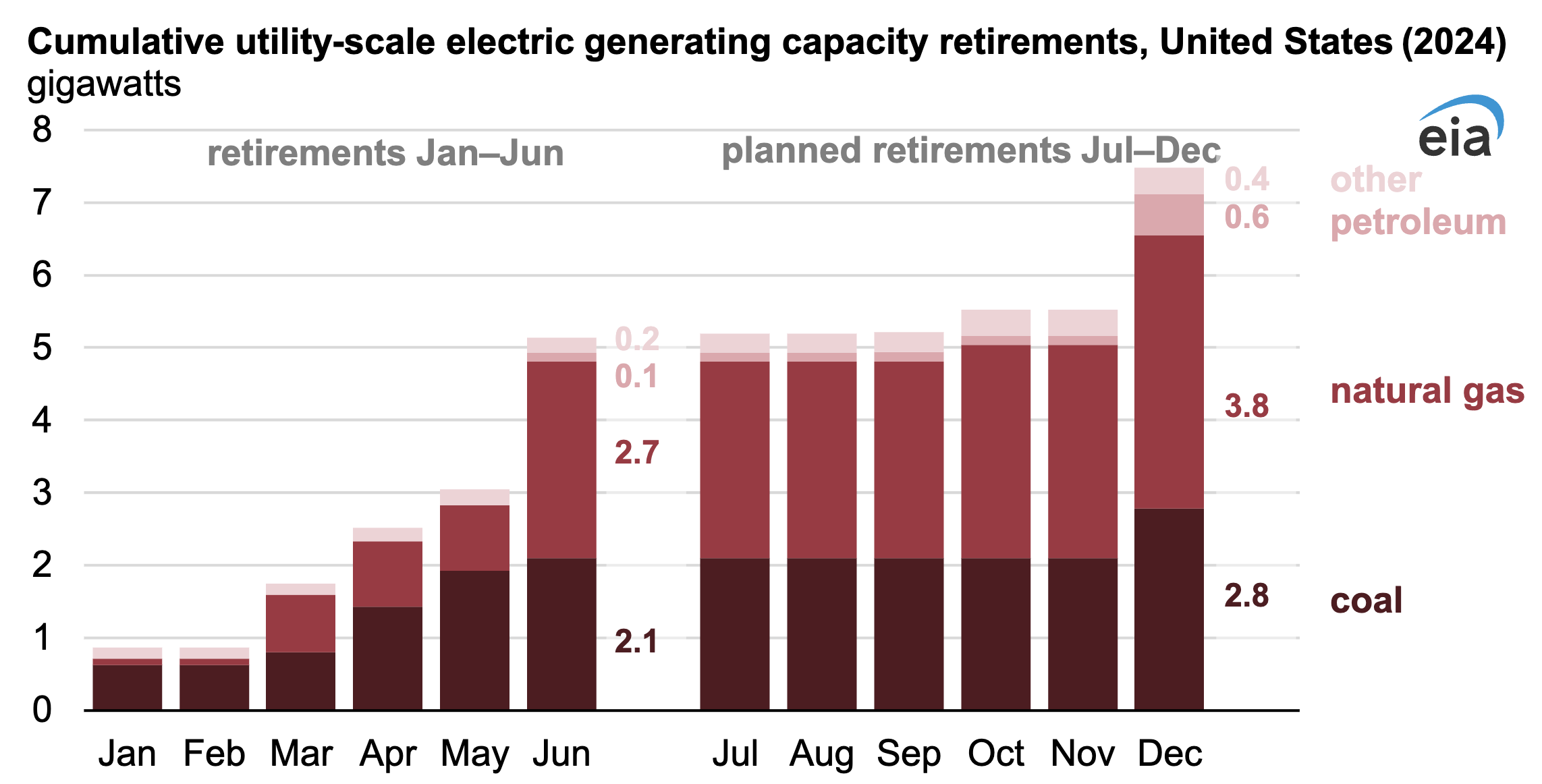Sign up for daily news updates from CleanTechnica on email. Or follow us on Google News!
According to our latest Preliminary Monthly Electric Generator Inventory, developers and power plant owners added 20.2 gigawatts (GW) of utility-scale electric generating capacity in the United States during the first half of 2024. This new capacity is 3.6 GW (21%) more than the capacity added during the first six months of 2023. Based on the most recently reported data, developers and owners expect to add another 42.6 GW of capacity in the second half of the year.

Operational capacity additions: As in 2023, solar accounted for the largest share of newly operating generating capacity in the United States during the first half of 2024. Solar additions totaled 12 GW, 59% of all additions. Texas and Florida made up 38% of U.S. solar additions. The 690-megawatt (MW) solar and storage Gemini facility in Nevada and the 653-MW Lumina Solar Project in Texas were the largest solar projects that came online in the first six months of 2024.
The second-most capacity additions so far this year were battery storage, which made up 21% (4.2 GW). Battery additions were concentrated in four states: California (37% of the U.S. total), Texas (24%), Arizona (19%), and Nevada (13%). The 380-MW battery storage capacity at Gemini and the 300-MW Eleven Mile Solar Center in Arizona were the two largest projects that came online in the first half of 2024.
Wind power made up 12% (2.5 GW) of U.S. capacity additions. Canyon Wind (309 MW) and Goodnight (266 MW), both located in Texas, were the largest wind projects that came online in the first half of the year.
Nuclear power increased in the United States during 2024 as well. Unit 4 (1,114 MW) at Georgia’s Vogtle nuclear power plant began commercial operations in April, making Vogtle the largest nuclear facility in the United States and the only one with four nuclear power reactors.
Retired capacity: Retirement of U.S. electric generating capacity has slowed in 2024. Operators retired 5.1 GW of generating capacity in the first half of the year. During the first six months of 2023, operators retired 9.2 GW of generation. In the first half of 2024, more than half (53%) of the retired capacity had used natural gas as its fuel, followed by coal at 41%.
The largest U.S. coal retirements include Seminole Electric Cooperative’s Unit 1 (626.0 MW) in Florida, which retired in January, and Homer City Generating Station’s Unit 1 (626.1 MW) in Pennsylvania, which retired in April. The six-unit, 1,413-MW Mystic Generating Station combined-cycle facility in Massachusetts was the largest natural gas retirement this year and had been the third-largest power plant in New England.

Plans for changes in capacity: Developers plan to add 42.6 GW of new capacity in the United States in the second half of 2024. Nearly 60% of that planned capacity is from solar (25 GW), followed by battery storage (10.8 GW) and wind (4.6 GW).
If utilities add all the solar capacity they are currently planning, solar capacity additions will total 37 GW in 2024, a record in any one year and almost double last year’s 18.8 GW.
Utilities could also add a record amount of battery storage capacity this year (15 GW) if all planned additions come online. Plans for storage capacity in Texas and California currently account for 81% of new battery storage capacity in the second half of the year.
About 2.4 GW of capacity is scheduled to retire during the second half of 2024, including 0.7 GW of coal and 1.1 GW of natural gas.
Originally published on Today in Energy. Principal contributor: Suparna Ray
Have a tip for CleanTechnica? Want to advertise? Want to suggest a guest for our CleanTech Talk podcast? Contact us here.
Latest CleanTechnica.TV Videos
CleanTechnica uses affiliate links. See our policy here.
CleanTechnica’s Comment Policy





